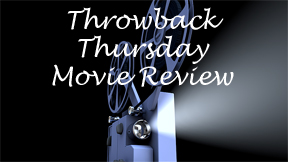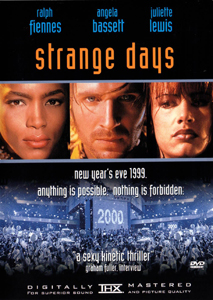In his directorial work, James Cameron set aside sci-fi visions after 1991’s “Terminator 2” to prove he could do comedy (1994’s “True Lies”) and historic epics (1997’s “Titanic”). But he wrote his most pointed SF commentary during this period, too: “Strange Days” (1995).
It’s less talked about because he handed the director’s reins to Kathryn Bigelow (who would later join Cameron as an Oscar-winning helmer), but Cameron devised this story himself and co-wrote the screenplay with Jay Cocks.
The backdrop and themes are inspired by the Rodney King beating and riots. Los Angeles inner-city gangs and citizens battle cops merely as background action to the main story. The movie is not a look back at 1991, though, it’s a look to the future.

“Strange Days” (1995)
Director: Kathryn Bigelow
Writers: James Cameron (screenplay, story), Jay Cocks (screenplay)
Stars: Ralph Fiennes, Angela Bassett, Juliette Lewis
Predicting the inevitable
“Strange Days” is set in the final days of 1999 in order to allow for the near-future tech that will – among other things – make recordings of police-citizen interactions easy and commonplace. It predicts events such as the 2020 George Floyd murder, although the film’s central murder is not recorded by police body cameras but rather by a citizen who is “wired.”
The film’s prescience is perhaps why it has been steadily more respected as time goes by as a portrait of the 21st century that was literally ahead of its time (it predicts 2000 as a tipping point rather than 2020). Let’s not get carried away with our praise of that: It merely takes an observer, not Nostradamus, to see that cops-versus-citizen clashes would continue after the King incident.
Indeed, one might say “Strange Days’ ” events are merely the King events blown up for cinematic effect. And the plot’s solution is Pollyana-ish. It simply requires that the top local official be both aware of the reality in his city and not be corrupt. (Unfortunately, how often do the people elect such a person? It seems the movie’s Angelinos have done so by dumb luck.)
Parallels to social media and cellphones
The more impressive part of “Strange Days” is how it predicts people’s increasingly plugged-in nature. Lenny (Ralph Fiennes, far removed from Voldemort) is a good-hearted black-market dealer in virtual-reality discs. These VR movies – sight, sound and everything else, since your brain is connected – come from real events experienced by real people. Virtual reality isn’t the right term; try borrowed reality.
So the film has something to say about the mental-health problems of comparing your life to other people’s, obsession with one’s own past events, and plain ole social-media over-indulgence. Troubled punk singer Faith (a sexy Juliette Lewis) had broken up with Lenny, but he’s in love with her, and he regularly jacks in to their old home videos.

The drug-addiction parallel is hardly a parallel; it’s one and the same. People are addicted to this tech the same way people of today are attached to social media and their smartphones. Lenny isn’t immune, something that concerns friend Mace (a kick-ass Angela Bassett).
In the most clever and harrowing sequence, a tape shows a rapist who has plugged his target into his own brainwaves. Thus the tech creates a feedback loop wherein the rapist is experiencing the victim’s fear and the victim is experiencing the rapist’s glorious cruelty.
Cameron’s most predictive work?
In addition to being smart, “Strange Days” is stylish, dripping with neo-noir Nineties cool and pre-“Blair Witch” “found footage” as Lenny and Mace play a cat-and-mouse game amid an L.A. bubbling with Year 2000 anxiety. Lenny and Mace’s allies and enemies come from a cast including Tom Sizemore, Vincent D’Onofrio, William Fichtner and Michael Wincott (that guy with the deep voice), and all are plugged in to the material.
The film simply uses the term “2K,” as the colloquial “Y2K” hadn’t come into use yet. Fears about computer systems crashing worldwide aren’t part of the narrative. Instead, the film centers on the collapse of the police as a reliable institution and the potential domino effect.
Interestingly, Cameron’s interest was later piqued by the idea of a global computer-grid collapse, but not until after Y2K. “Dark Angel,” the still-populated ruins of which seem to rise out of “Strange Days’ ” teetering L.A., debuted in Fall 2000.
“Strange Days” is a Weird SF movie that resists being made fun of by today’s viewers, because it predicts the future with such accuracy, only being premature with the date. That lends the film a touch of fatalistic melancholy, but not so much that the thrills are gone, because we are jacked in to Fiennes, Bassett and Lewis.
Because Cameron’s resume is so loaded with legendary films, “Strange Days” will go unmentioned in any short biography. It’s fascinating, then, that it’s his most on-point portrayal of the future of technology and human behavior. Strange days? More like just another day.

